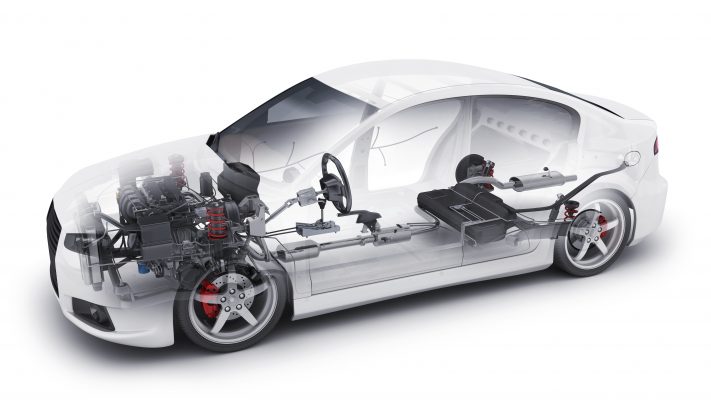Introduction – Essay Writing Tips
A key skill to have throughout your secondary and higher education is the ability to write strong essays. In this sense, we mean an ‘argumentative’ essay – one which argues for a thesis (core idea) or argues against another thesis. The central part of this type of essay is the ‘argument’. You need to be able to create a convincing, persuasive argument based on facts and interpretations. Here, we’re going to look at the best argumentative and persuasive techniques you can use to create sturdy, convincing essays.
What is Persuasion? – Essay Writing Tips
First, let’s take a look at what we mean by persuasion. In this context, persuasion is the ability to convince others that your point of view is either correct, or at least reasonable. For example, you might have to convince someone that military intervention and war is acceptable in some cases. You would have to use techniques to persuade whoever you’re talking to (or arguing with) that your position is right. In order to convince anyone that your position is right, there is one thing you must have:
EVIDENCE!
Evidence and Persuasion – Essay Writing Tips
In order to form a persuasive argument or essay, you need evidence to back up your ideas. Evidence is any kind of credible material which supports your point of view. Evidence can take many forms, such as:
- ‘Hard’ facts, including statistics or scientific studies;
- Interpretation (this is extremely important for Humanities subjects such as History and English Literature);
- Quotations, such as “If music be the food of love, play on” from Shakespeare’s Twelfth Night.
You need to be able to give evidence to convince other people that your point of view is correct.
Think of your argument or essay as a car. For it to go anywhere, you need three things: fuel, working parts, and a driver.
- In this analogy, the driver is you. You’re writing the essay, so you’re driving the argument.
- The ‘fuel’ for your argument is your evidence. You need to fill your argument with high-quality evidence for your argument to move and be effective.
- The working parts of your argument are your persuasive and argumentative techniques. Without these, there’s nothing to process your fuel and turn it into energy to move your argument.

On that note, let’s take a look at some persuasive techniques you can use in your essay.
Proposing Your Argument – Essay Writing Tips
In order to write any good essay, you need to make it clear what your argument is! A strong introduction is the best place to propose your argument.
In an introduction, you should aim to do the following:
- Briefly summarise your argument for the entire essay.
- Give some basic context for your argument, such as why it’s important.
- Do both of these in as few words as possible – don’t let your introduction go on forever.
Once you have your introduction in place, it’s time to move on to your main argument.

Creating Your Argument: Introducing Key Points – Essay Writing Tips
Any good essay is made up of multiple parts (or points). These add up to become your overall argument. You can think of these parts as ‘mini-arguments’. Each one needs to be introduced, argued for, and then concluded. This technique is commonly known as Point, Evidence, Explain, Link.
- So, you begin by introducing your point: “Let us consider the claim that…”
- Then, you give your evidence: “For example, this study shows that…”
- After this, you need to explain your evidence: “Therefore, it seems likely that…”
- Finally, you need to link this point back to your main argument: “So, if this is the case, then we need to consider the core argument of this essay.”
Linking Your Argument With ‘Linking Words/Phrases’ – Essay Writing Tips
Linking Words and Linking Phrases are used to link parts of your argument together. This helps you transition smoothly between different ideas, creating an argument that flows. An argument that flows well will be easier to read, and probably more convincing! So, try to link your points together using phrases such as…
- “There is a great deal of evidence to support this…”
- “In addition to the previous point, we must also consider the following…”
- “At one level, this seems plausible. However…”
- “One reason for accepting this argument is…”
- “Ultimately…”
- “Furthermore…”
- “Moreover…”
- “Nevertheless…”
- “Even though evidence suggests this…”

Balancing Your Argument With Other Points of View – Essay Writing Tips
In some essays, you’ll be expected to ‘weigh up’ opposing arguments or points of view. In this type of essay, try to use the following phrases to create a balanced atmosphere:
- “While it appears that the issue of _______ is straight-forward, closer inspection reveals compelling arguments both in favour of and against…”
- “If we are come to a conclusion, we must consider both points of view…”
- “Others have opposed this point of view, arguing that…”
While you need to get multiple perspectives in an essay, this doesn’t mean that you can’t take a side. In fact, most essays which ask you to evaluate two or more positions will expect you to come to a conclusion. So, use phrases such as the following to reach your conclusion:
- “While there is compelling evidence for both _____ and _____, it’s evident that _____ is the correct perspective.”
- “While there are several convincing arguments that support this perspective, the balance of the argument is weighted in the favour of _____…”
Evaluating Evidence – Essay Writing Tips
In some subjects, you will be required to evaluate evidence presented to you, or evaluate the evidence that you’re using in your own argument. For example, in History, you might be asked to evaluate a historical perspective or historical data. You need to consider the credibility of the source. Is the source biased? Does the writer have a vested interest in supporting one perspective over another? If so, does this have an obvious impact on the evidence? Must we discount this evidence?
Remember: most sources are biased in some way. The best we can do is identify any possible bias, and take it into account when constructing an argument.
Here are some useful phrases to use when evaluating evidence:
- “The evidence to support this argument is accurate / credible / reliable / unreliable / difficult to substantiate.”
- “While this seems like watertight proof, the writer omits important details which completely changes the data, such as…”
- “While the writer seems unbiased, the evidence is actually presented in an incredibly subjective fashion. It’s entirely possibly that the writer is unaware of his or her own biases.”
Concluding Your Argument – Essay Writing Tips
When you finish your argument, you need to come to a conclusion. So, you need to wrap up all of your points as neatly as possible. Here are some tips to do so:
- Try to summarise the main thread of your argument in one or two sentences, and how this means you’ve arrived at your conclusion. You want every point to flow from the last, so that your conclusion doesn’t seem like a huge leap in logic!
- Don’t introduce any new ideas in your conclusion. If you have more ideas that you can write about, and are relevant, see where they’ll fit in your argument. Then, expand on your ideas.
- Just like the introduction, try to do all of this in as few words as possible. Keep your conclusion short and sweet!
In Conclusion… – Essay Writing Tips
So, to conclude:
- There are three key parts to an essay: the driver (you), the working parts (persuasive techniques), and fuel (evidence). You need all three to make your essay take off!
- Keep your introduction short and sweet.
Introduce key points, justify them with evidence, then link them to your main point. - Balance your argument by evaluating other points of view.
- Evaluate bias and other motives in your sources.
Keep your conclusion concise and neat.


